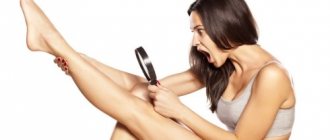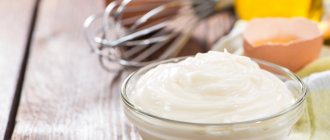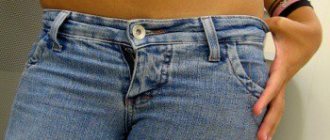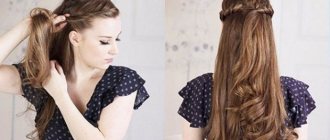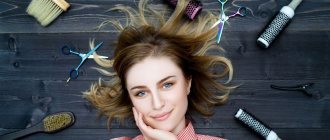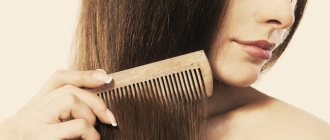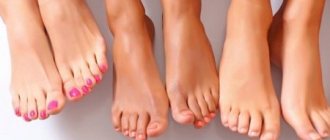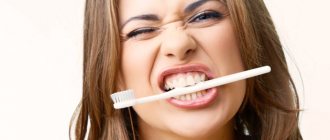Category: Hair removal
Women have been taking care of the beauty of their face and body since ancient times. Masks for skin and hair, exercises for weight loss, removal of unwanted hair are relevant at all times, because a beautiful woman is a well-groomed woman. Hair depilation deserves special attention in body care. To obtain smooth, radiant skin, many modern procedures have been developed - photo- and electrolysis, Qull-epilation and laser hair removal and others. However, not all women are able to pay for expensive procedures, and some representatives of the fair sex have contraindications to their implementation. There is only one way out - to look for simple and inexpensive methods, for example, hair removal with hydrogen peroxide.
How it works
The epilation properties of peroxide consist of a triple effect on hair:
- Bleaching (the color pigment is destroyed and the hair becomes faded and barely noticeable).
- Thinning (brittle hairs fall out faster).
- Violation of the integrity of the hair shaft (the substance destroys the structure of the hair and burns it).
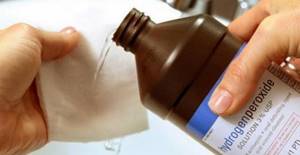
As additional benefits, we highlight the bactericidal property of hydrogen peroxide. Along with hair removal, the hair surface is also disinfected. Peroxide significantly thins and weakens hair, causing hair loss to occur quickly and unnoticed.
You won't be able to get rid of hair instantly through chemical treatment. Regularity and the ability to prepare the drug correctly are important here. Different people's hair differs in color, structure and thickness, so the concentration of peroxide should also be different.
Fair-haired women and natural blondes can get by with a weak mixture of the substance and water. It is enough to obtain a concentrate of 4 - 8%. Owners of coarse hair will need a more saturated solution - 11 - 12%.
The simplest recipe for preparing peroxide in the required concentration is as follows: 2 tablets of hydroperite are dissolved in 100 ml of pharmaceutical 3% peroxide and a derivative product is obtained in the form of 6% peroxide.
Advantages
Using hydrogen peroxide for hair removal, those with soft, fine hair will immediately appreciate the benefits of the product. If the hairs are too hard and thick, the results from using peroxide will come a little later.
Benefits of hair removal with hydrogen peroxide:
- The cost-effectiveness of the method and the availability of the substance for hair removal. The drug is sold in every pharmacy at a low price and without a prescription.
- Absolute safety. Peroxide is a powerful antiseptic. Doctors use it to treat wounds. Depilation with hydrogen peroxide reduces the risk of skin infection to zero.
- Easy to use. The prepared solution can be used immediately upon arrival from the pharmacy. There is no need to mix it with anything. No additional accessories are required to apply the chemical liquid.
- No side effects. The substance does not create irritation or pain during processing.
- Visual effect. The result of regular use of peroxide is the lightening of body hair. The vegetation is almost colorless and invisible on the skin.
- Complete hair removal. If hydrogen peroxide for unwanted hair is constantly used, the structure of the hairs undergoes negative changes. Thinning hairs break off and fall out, gradually freeing the area of the body from their presence.
The essence of the method
If a woman uses dye to change the color of her hair, she knows that the composition cannot be overexposed. Otherwise, coloring will worsen the condition of the hair and cause hair loss. In the same way, peroxide affects the hair.
A single use of peroxide will not give stunning results. But with each session, the hairs will become lighter, and you will notice that they have become thinner and more fragile. Weakened vegetation will fall out faster.
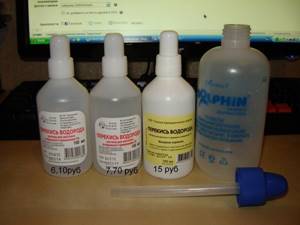
If you are determined to remove hair using hydrogen peroxide, we recommend following three simple rules:
- Before removing your hair, test for allergic reactions. Place a small amount of the solution on the inside of your elbow and observe the skin for a few minutes. The absence of negative changes indicates the tolerance of the chemical.
- If you have dry skin, start the procedure by pre-treating your body with cream. At the end of the manipulation, also lubricate with cream. This will protect the skin from drying out.
- Use solutions whose concentration does not exceed 12%. Too saturated concentrates cause chemical burns and destruction of not only hair, but also skin.
- When preparing the solution yourself, do not use metal containers. The interaction of iron with hydrogen compounds produces dangerous oxides.
- For best results, keep the peroxide mask on your body for at least 30 minutes.
- Concentrated peroxide is quite aggressive. It is recommended to use it with extreme caution for girls with sensitive skin.
If you have taken our warnings into account, start fighting unnecessary vegetation. In addition to the solution, you will need cotton pads or swabs. Apply the product to the hair area and wait until the liquid dries. If desired, apply a second coat and allow the solution to dry again. Rinse off the substance with plenty of warm water and repeat the procedure at another time of the same day. Do this for several days in a row until you get the desired effect.
Pros and cons of bleaching with peroxide
Of course, such bleaching has its advantages and disadvantages. The advantages include:
- low cost and availability (you can actually buy peroxide at any hardware store or pharmacy for literally pennies);
- The lightening procedure is simple, you can do it yourself at home;
- peroxide penetrates well into the hair shaft and washes out pigment much better than any other folk bleaching agent.
There are not many disadvantages. Let's highlight the main ones:
- sometimes peroxide causes allergic reactions (it is better to do a test before lightening);
- It will not be possible to bleach bright black curls to blonde in this way;
- If you do not follow the technology (for example, leave the solution on your head), you can ruin your hair.

@live777th.com
Hair removal with peroxide on legs
There are several options for using peroxide to remove hair from the skin of the legs. The simplest method is to apply the drug to overgrown skin 2 times a day. The procedure is carried out until significant lightening and hair loss occur. But you shouldn’t organize such sessions every day; it’s enough to soak the vegetation with the chemical 3 times a week.
Now we will tell you in detail how to remove hair growing on your legs with hydrogen peroxide. In the first case, you need to take 40 g of perhydrol and 1 tsp. peroxide, dissolve the products and pour in 20 ml of water and 30 ml of liquid soap. The mixture is carefully distributed on the legs and wait until it dries. Massage and rubbing are not done. The session is completed by thoroughly washing the feet and applying moisturizer.
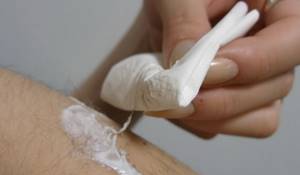
The second recipe for hair removal with hydrogen peroxide contains ammonia:
- Mix 50 ml of 6 percent peroxide with ammonia (10 drops are enough).
- Add a little flour to the mixture and mix it again.
- Apply the mask to the skin of your feet.
- After 15 minutes, wash off the drug.
To quickly whiten hair in areas of increased growth, use a mixture of peroxide, clay and ammonia. The peroxide solution should be 20%. Take a little bit of clay and ammonia. The product should be easily applied to the skin. Leave it on for 10 minutes and rinse off.
How to bleach it?
As mentioned above, means for bleaching hair on the legs can be varied, ranging from pharmaceutical preparations to folk remedies, so let’s consider them in more detail.
Peroxide and ammonia
Very effective means as clarifiers are hydrogen peroxide with ammonia. In order to prepare the product, add 15 drops of ammonia solution to a tablespoon of peroxide.
Pour the resulting product with liquid soap in the amount of 1/3 teaspoon, in order to obtain a foamed mixture, it should be applied to the area that is planned to be lightened.
This product is left on the body for up to 5 minutes, then washed off with plenty of warm water. The procedure is carried out daily.
It must be taken into account that due to the ammonia content in the product, an irritating effect may occur and a burning sensation may appear. If such an incident occurs, it is necessary to immediately rinse the product with water and reduce the concentration of ammonia.
Peroxide and lanolin
If you add a little lanolin to peroxide, this product will moisturize dry skin on your feet,
since peroxide has a drying effect.
Lanolin has the properties of saturating the skin with moisture and allowing it to retain it; it also has a positive effect on the regenerative processes of skin cells.
Please note that your skin may be prone to allergic reactions to lanolin, so before using this product you should do an allergy test.
Did you know?
Lanolin is translated from Latin as “wool and oil.” And this integral component of organic skin care cosmetics is produced from fat that accumulates in sheep’s wool.
Peroxide and water
Let's look at how to bleach hair with hydrogen peroxide on the body.
It should be noted that this is the simplest method, which does not require lengthy preparation of components or extra costs, since hydrogen peroxide is always present in the first aid kit. In order to prepare such a product, you need to use two parts peroxide and one part water.
If you buy a 3% solution of the drug, you don’t have to dilute it with water at all. If you purchased an 8% medicinal liquid, it is recommended to dilute the product in the proportion indicated above. The resulting liquid should be used to treat problem areas daily, and soon you will notice a good effect from the application.
Watch the video for experience using hydrogen peroxide to get rid of hair.
Chamomile and calendula decoction
A natural and economical option for bleaching hair is the use of a decoction of medicinal herbs. Chamomile and calendula work well in this case. To prepare the decoction, you need to use the flowers of the plant, which require brewing for a long time and in high concentration for the best result.
Use a teaspoon of lemon juice for 50 ml of the finished decoction - this will significantly improve the bleaching process. It is recommended to use this product daily, twice or thrice a day.
Parsley
The desired effect can also be obtained from using parsley. A decoction or infusion is prepared on its basis. To prepare the decoction, chop fresh parsley in the amount of 2 tbsp. l. or take one tablespoon of dry herb and add boiling water. Cook this product over low heat for about 7 minutes. After the decoction has cooled, problem areas should be treated several times daily.
Cinnamon and honey
Cinnamon with honey has a good effect. To prepare this remedy, you need to mix a teaspoon of ground cinnamon with liquid honey,
to form a thick mass and apply to the hair growth area. To improve the result, it is recommended to leave the mixture on the skin for up to 20 minutes, then rinse with warm water.
Lemon juice
A good effect can be obtained from using lemon juice, so let’s take a closer look at how to lighten leg hair using citrus fruits.
Important!
Let us immediately note that you need to be very careful, since the possibility of an allergic reaction is very high, so it is recommended to do an allergy test first.
Pregnant women should not use this method of bleaching.
To carry out the necessary procedure, you should squeeze out the juice of 1 lemon and treat problem areas with it.
This product should not be used daily, but at least every other day or even two.
The effect of using lemon juice will be better if, after the manipulation, your feet are in direct sunlight for some time, which will enhance the effect of the lemon.
Hair dye
Oddly enough, there is a way to bleach using bleaching hair dye
, and quite a lot of women use it effectively.
Apply the dye in the same way as when dyeing the hair on your head, but be careful, as it may happen that the hairs do not discolor, but turn yellow or red. Therefore, it is better to try this method on a small area of the body to avoid unforeseen situations.
Watch the video to see how to discolor unwanted vegetation using paint.
Did you know?
The first reliably known use of hair dye dates back to 1902. At this time, Schuller, a chemist from France, produced the first chemical hair coloring. The experiment was successful, the product was patented and completely revolutionized hairdressing.
Facial hair removal
A mustache above the upper lip of the fair sex is a completely unnecessary phenomenon. If hairs are shaved or pulled out, they grow back quickly. So why not lighten them and remove them completely using hydrogen peroxide?
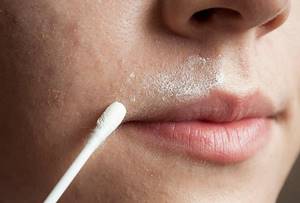
Let's eliminate this flaw at home:
- Soak a cotton swab thoroughly in a 3% peroxide solution and wipe the problem area with it for 5 minutes. After several procedures, the hairs will begin to lighten and break, and soon they will disappear completely.
- Squeeze out some shaving foam and take the same amount of hydrogen peroxide. Apply the mixture to your hair and leave for 20 minutes. Complete the procedure by washing your face with soap and applying a nourishing cream.
- Pour half a teaspoon of ammonia and 50 ml of hydrogen peroxide. Mix a little shaving cream into the substance and apply the product along the hairline for 10 minutes. Remove the composition with a cotton pad, wash your face and lubricate your face with cream.
- Make a perhydrol mask by mixing 2 ml of peroxide (30%), 8 g of petroleum jelly, 12 g of lanolin ointment and a few drops of ammonia. Apply the product to the desired area and wash off only when it dries.
If hydrogen peroxide does not save you from unwanted hair, there may be a hormonal imbalance in your body. Your doctor will help you understand the causes of excess hair growth and suppress the intensity of this process.
We lighten hair at home using folk remedies
The most gentle, although not the fastest, lightening is bleaching using folk remedies. After using them, the risk of damaging your hair is reduced to a minimum, so it is best to lighten your hair at home using natural ingredients. Which ones exactly depends on the color of your natural hair.
For naturally blond women, products using chamomile, lemon, honey or kefir are perfect to improve their color. For dark hair, you need stronger products, such as hydrogen peroxide or hydroperite.
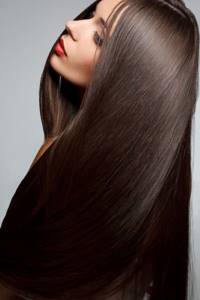
Gifts of nature
Products based on natural ingredients are mainly suitable for fair-haired and fair-haired women. Their effect is not particularly strong, and it takes a long time to achieve an effect on dark hair.
1) Everyone knows that lemon is a strong oxidizing agent, this is clear at least from its taste. And oxidation is precisely the basis for lightening. By the way, this is one of the few means with which you can try to treat dark hair. Lemon is not suitable for everyone, but sometimes the effect exceeds all expectations.

This product also bleaches body hair well. At the same time, such procedures practically do not cause harm.
2) Chamomile is the best option for light brown, ash and blonde hair. It will give a wonderful golden hue and lighten it by 1-2 tones.
3) Surprisingly, with the help of kefir you can also lighten your hair, and at the same time promote its growth, restore and strengthen it.
4) Honey is most often used as a component of a nourishing hair mask. Meanwhile, it also has a brightening effect.
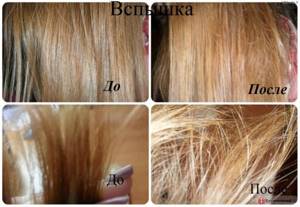
5) And a completely amazing product that helps lighten hair very well is cinnamon.
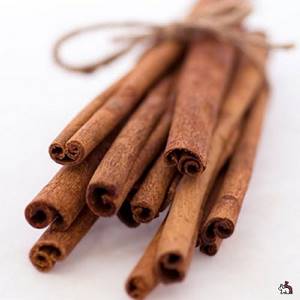
This spice is used both in powder and cinnamon oil, which can be purchased at the pharmacy.
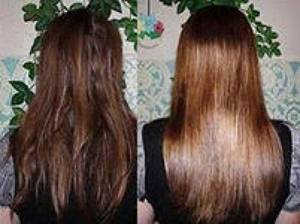
6) You can even use long tea, however, in this case it is necessary to add additional ingredients that have the same effect. For example, chamomile and henna.
Hydrogen peroxide and hydroperite
You can’t easily deal with dark hair using folk remedies based on natural ingredients; it will take a lot of time, and the result is not guaranteed.
1) Most often, hair is bleached with hydrogen peroxide. You need to be careful when using it, as there is a risk of burning your hair, especially the ends.
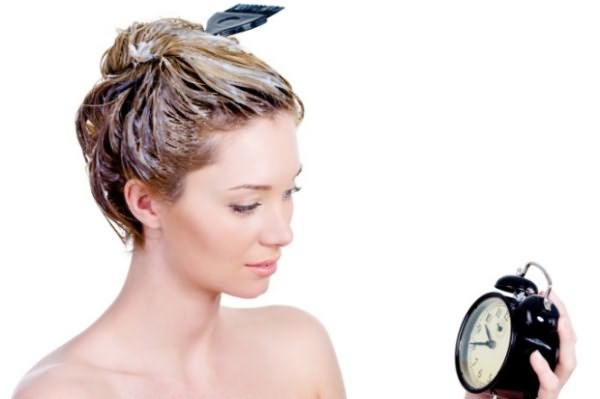
Therefore, monitor the duration of action of the product, and also choose the right concentration of peroxide in the composition. For coarse thick hair you need 8-12% peroxide, for medium softness - 6%, for weak or thin hair - 5%.
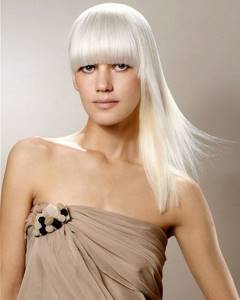
2) Another common method of lightening is bleaching using hydroperite. These tablets contain the same hydrogen peroxide plus urea, an equally active brightener. Therefore, hydroperite should be used even more carefully than peroxide. It works no less effectively, look how different the color is in the photo before and after using these products.
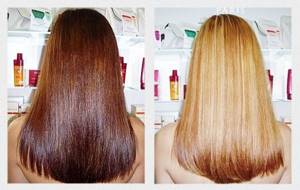
Precautions when using active agents
1) Carry out the procedure wearing thick medical gloves, this will protect the skin of your hands.
1) Do not wash your hair before bleaching; the natural layer of oil will serve as protection for the scalp.
2) For application, it is better to use a plastic comb or brush with artificial bristles.
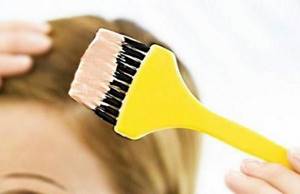
3) When preparing any compositions, use any utensils other than metal.

4) After bleaching, it is imperative to restore colored hair using special products specifically for this type. You can restore your hair with the help of traditional medicine.
How to properly use lightening agents can be seen in the proposed video.
webdiana.ru>
Reviews
Whether it is worth using hydrogen peroxide when you want to remove hair from the face or body, decide for yourself. We remind you that thin, light hairs are easier to remove. However, women in reviews claim that peroxide does an excellent job of removing hair on their arms and legs. Although in these areas of the body the vegetation is more noticeable and dense.
Olga, 25 years old, Nizhny Novgorod: “I recently mastered the recipe for hair removal with ammonia and hydrogen peroxide. The hair on my body was soft and darkish. I achieved significant discoloration after several procedures. I also noticed that new hairs grow slower.”
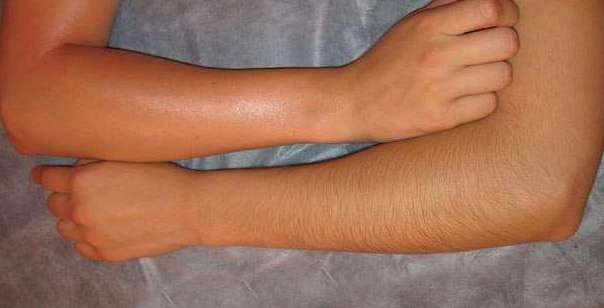
Irina, 35 years old, Anapa: “I got a mustache due to early menopause. The doctor helped me stabilize my hormonal levels, but the problem of excess facial hair has not gone away. On the advice of a cosmetologist friend, I started using hydrogen peroxide and after several procedures, the hair on my face became less noticeable. The method really works, so there is a chance to remove the antennae completely.”
Kira, 20 years old, Irkutsk: “I developed excessive hair after an unsuccessful pregnancy. At first I shaved my arms and legs with a machine, but then I realized that the razor only helped for a short time. I learned about the possibility of removing hair with hydrogen peroxide on the forum. I did the first procedure very carefully, but later I realized that I tolerate peroxide normally. Now my arms and legs are covered with barely noticeable fluff, and it makes me happy.”
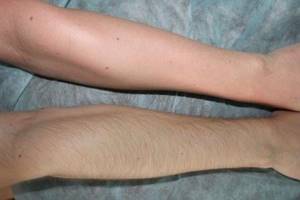
Post Views: 28
Features of lightening
All hair is lightened, regardless of color and structure.
It is important to remember that the effect when lightening natural curls can be completely different than when trying to lighten already colored strands.
The intensity of the resulting color, as well as the shade, depend on the original color of the curls. So, red strands can become red, and light blond ones can become ashy. To understand what color you will end up with, it is recommended to conduct a preliminary test as described above.
Particular care should be taken when lightening thin strands. Such curls need careful care and long-term recovery after lightening, so you should stock up in advance on strengthening conditioners, masks and hair oils that can both preserve the original hair structure and restore already damaged curls
Dark hair
Blonding black, chestnut or red curls is a difficult procedure. It will take at least a month to go from a natural brunette to a blonde, but it is still possible. It is better to use hydrogen peroxide in small proportions, applying to your hair daily.
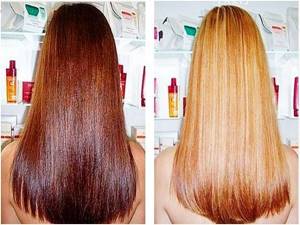
Applying even a large amount of peroxide once will not only not give the expected effect, but can also cause harm. As mentioned above, a lot depends on the original color. The darker the shade, the longer it will take to completely lighten.
Dyed hair
After coloring, hair can be lightened with great difficulty, especially when it comes to dark colors. Dark dye literally eats into the scalp, so changing the color to a lighter one can be extremely difficult.
It will take 2-3 times longer to achieve the desired shade than when trying to lighten natural hair of the same color. It is better to lighten colored curls in a salon; home lightening will require a lot of patience from the girl.
Blonde hair
Blondes find it easiest to lighten their locks. In most cases, just one procedure is enough to make light brown or brown hair 3-4 shades lighter.
It is important not to overdo it with peroxide; the hair may turn out too light and unnatural. In addition, it is necessary to prevent the appearance of a yellow tint.
Individual strands
To lighten selected curls, you will need to divide your hair into several equal parts, selecting just one strand from each, which will be exposed to the lightener.
To restore dull and brittle hair, you can use oak bark.
Find out on our website how a decoction of oak bark helps against hair loss and other hair problems.
To prevent the remaining curls from coming into contact with the solution and also partially losing their original color, you need to tie them into a bun, or separate them from the rest using hairpins.
You should not overuse the hydrogen solution; overdried strands become brittle, quickly lose their shine and begin to fall out. Hydrogen peroxide in combination with ammonia, diluted in violation of the specified proportions, can cause irreparable harm to curls.
Before performing any actions, it is strongly recommended to consult a cosmetologist.
Video: lightening hair ends
In this video you will learn how to lighten your hair at home in the ombre style.
https://youtube.com/watch?v=lih3hSSjDKU
You should avoid getting peroxide on your forehead and face as it may also make it noticeably lighter. To avoid this, it is better to cover your face with a small amount of moisturizer before applying peroxide. The fat will prevent the peroxide from getting on your skin and protect it from discoloration.
It is best to bleach your curls in winter; in this case, you can easily hide the failed experiment under a headdress and recolor your hair, or continue bleaching.

